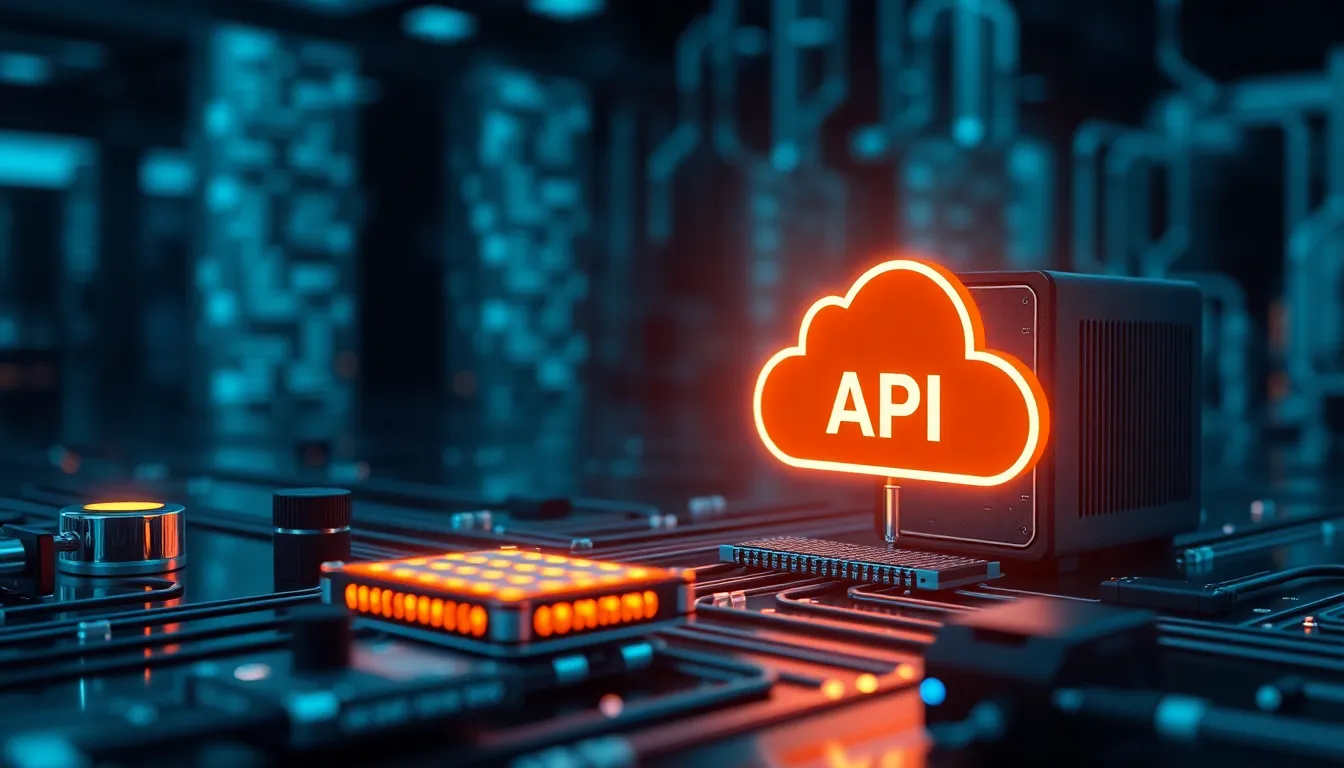Table of Contents
ToggleIn the rapidly evolving world of the Internet of Things (IoT), Application Programming Interfaces (APIs) play a crucial role in connecting devices and enabling seamless communication. As smart devices proliferate, the need for efficient data exchange becomes paramount. APIs serve as the backbone of this connectivity, allowing various systems to interact and share information effortlessly.
By streamlining the integration of different technologies, APIs empower developers to create innovative solutions that enhance user experiences. From smart homes to industrial automation, the impact of APIs in IoT is profound, driving efficiency and enabling new functionalities. Understanding their significance is essential for anyone looking to navigate the complexities of IoT ecosystems.
Overview of APIs in IoT
APIs serve as the backbone of communication in IoT environments. They enable devices to interact seamlessly, facilitating data exchange. As the number of connected devices increases, the role of APIs becomes more critical.
APIs can be categorized into several types within the IoT ecosystem:
- REST APIs: These APIs use standard HTTP methods for communication. REST APIs are lightweight and widely adopted, making them suitable for resource-constrained devices.
- MQTT APIs: MQTT is a messaging protocol designed for low-bandwidth, high-latency networks. This API type excels in providing real-time data transmission, which is vital for time-sensitive IoT applications.
- WebSockets: WebSockets allow full-duplex communication channels over a single TCP connection. This capability is ideal for applications requiring real-time feedback, like home automation systems.
APIs not only facilitate device communication but also support backend functionalities. They enable integration with cloud services, allowing for data storage and analytics. This integration enhances the overall functionality of IoT solutions by enabling developers to leverage existing cloud-based platforms.
Furthermore, security is a significant concern in IoT. APIs often incorporate authentication mechanisms to ensure secure access. Common methods include OAuth and API keys, which help protect both the devices and the data transmitted.
APIs also improve the scalability of IoT solutions. By standardizing interactions, developers can add new devices or services without significant changes in the architecture. This adaptability supports the growing demand for connected solutions across industries.
Understanding APIs is essential for anyone involved in IoT development. They provide the tools necessary for building innovative applications that harness the full potential of connected devices. With APIs at the core, developers can streamline communication, integrate with various services, and enhance user experiences.
Importance of APIs in IoT

APIs play a crucial role in optimizing the functionality of IoT systems. They facilitate communication and data exchange among connected devices, enhancing the overall efficiency of IoT networks.
Simplifying Device Communication
APIs simplify device communication by standardizing data formats and protocols. Standardized REST APIs connect diverse devices seamlessly, allowing them to exchange information regardless of specifications. MQTT APIs streamline communication over unreliable networks, optimizing data flow for resource-constrained settings. WebSockets enable continuous connections, providing real-time interaction between devices and applications. This standardization fosters interoperability, which is essential for the large-scale implementation of IoT solutions.
Enabling Data Exchange
APIs enable efficient data exchange by integrating with cloud storage and analytics services. Data collected from IoT devices can be processed in real-time, driving immediate insights and actions. APIs facilitate this by connecting devices to backend systems securely, ensuring data integrity throughout the exchange process. Moreover, the use of APIs allows developers to create versatile applications that leverage data across various platforms, improving user experiences and expanding potential use cases within the IoT ecosystem.
Types of APIs Used in IoT
APIs used in IoT environments are varied, each serving specific functions to enhance the performance and connectivity of devices. Three notable types include RESTful APIs, MQTT APIs, and WebSockets.
RESTful APIs
RESTful APIs, leveraging Representational State Transfer (REST) principles, operate over HTTP. They are ideal for resource-constrained devices due to their lightweight nature. RESTful APIs utilize standard HTTP methods such as GET, POST, PUT, and DELETE, facilitating easy interaction with IoT devices. This simplicity allows developers to quickly integrate devices with web services while ensuring scalability and flexibility. RESTful APIs commonly use JSON or XML for data interchange, making them accessible and efficient for diverse IoT applications. Many cloud services and platforms support RESTful APIs, promoting interoperability among connected devices.
MQTT APIs
MQTT APIs focus on lightweight messaging protocols for real-time communication in IoT ecosystems. Designed specifically for low-bandwidth, high-latency networks, MQTT uses a publish-subscribe model for efficient data exchange. This model reduces the number of requests and management overhead on devices, allowing them to send and receive messages with minimal delay. MQTT supports various quality of service levels, ensuring reliable message delivery. Its low power consumption makes it suitable for battery-operated devices, widely adopted in applications such as remote monitoring and smart agriculture.
Challenges in Implementing APIs in IoT
Implementing APIs in IoT presents several challenges that organizations must address to ensure effective communication and integration among devices. Among these challenges are security concerns and scalability issues.
Security Concerns
Security remains a critical challenge in the IoT landscape. API vulnerabilities can expose devices and user data to various threats, such as unauthorized access and data breaches. Attackers often exploit weak authentication mechanisms or insufficient encryption protocols. For instance, APIs lacking proper OAuth implementations may allow unauthorized users to access sensitive device functionalities. Organizations must prioritize robust security measures, including end-to-end encryption, API gateway security, and regular security audits. Adopting these practices mitigates risks associated with compromised data integrity and user privacy.
Scalability Issues
Scalability poses another significant challenge in IoT API implementations. As the number of connected devices proliferates, managing API interactions efficiently becomes increasingly complex. Limited bandwidth and processing power can hinder performance, especially when many devices attempt simultaneous connections. Maintaining consistent response times and data throughput requires advanced API management strategies. Load balancing and caching mechanisms help distribute traffic and reduce latency during peak usage. Implementing microservices architectures also promotes scalability by allowing modular development, enabling organizations to adapt to the growing number of devices without extensive system overhauls.
Future Trends of APIs in IoT
APIs in IoT are evolving rapidly, adapting to new technological demands and user expectations. Several trends are emerging that shape the future landscape of APIs in this domain.
- Increased Adoption of Microservices
Microservices architecture allows for the development of smaller, independent services that communicate via APIs. This approach enhances scalability and flexibility, essential for managing a growing number of IoT devices.
- Enhanced Security Protocols
As security concerns increase, APIs will integrate advanced security measures such as blockchain technology. These measures improve data integrity and authentication, minimizing risks associated with unauthorized access and data breaches.
- AI and Machine Learning Integration
Machine learning algorithms will leverage APIs to analyze vast amounts of data generated by IoT devices. This integration enables predictive analytics, which provides actionable insights and automates decision-making processes.
- Edge Computing Advancements
Edge computing involves processing data closer to where it is generated. APIs will facilitate seamless communication between edge devices and central systems, enhancing response times and reducing latency in critical applications.
- Standardization Efforts
Industry-wide standardization of API protocols will promote interoperability among diverse IoT devices. Such efforts minimize fragmentation by allowing devices from different manufacturers to work together more efficiently.
- Greater Focus on Real-Time Data Processing
Future APIs will prioritize real-time capabilities to support applications requiring immediate data analysis and action, such as in healthcare and autonomous vehicles.
- Growth of API Management Platforms
The demand for comprehensive API management solutions is rising. These platforms simplify the process of designing, implementing, and monitoring APIs, ensuring reliability and ease of use in IoT environments.
- Collaboration Between Different IoT Sectors
Cross-industry collaboration will become more prevalent, with APIs facilitating interactions between various sectors, such as smart cities, healthcare, and agriculture. This collaboration fosters innovative solutions and broader application horizons.
As these trends continue to unfold, APIs will play a pivotal role in advancing IoT technology, ensuring that connected devices remain functional and efficient in an increasingly complex digital landscape.
APIs are essential for the growth and functionality of IoT systems. They enable seamless communication between devices and facilitate efficient data exchange. With various types of APIs available, developers can choose the best fit for their specific use cases, enhancing interoperability and scalability.
As IoT continues to evolve, the focus on security and real-time data processing will become increasingly important. By adopting advanced strategies and technologies, organizations can ensure their IoT solutions remain robust and secure. Embracing the potential of APIs will empower developers to create innovative applications that enhance user experiences and drive the future of connected technology.






